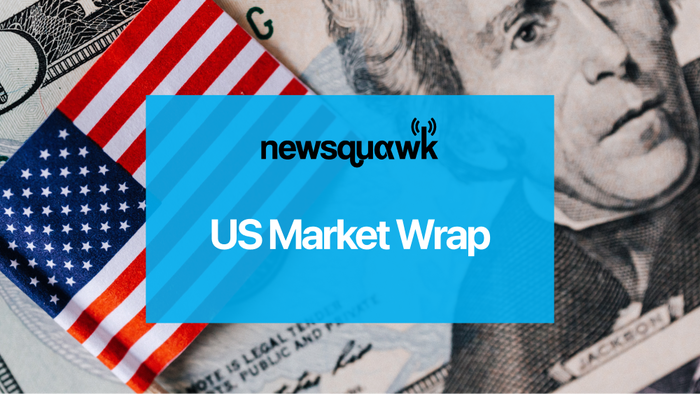
SNAPSHOT: Equities flat/down, Treasuries up, Crude up, Dollar down
REAR VIEW: US Retail Sales top expectations; US Import/Export Prices come in hotter than anticipated; Industrial Production surprises to the upside; Miran clears Senate vote to become interim Fed Governor; Atlanta Fed GDPNow (Q3) revised up; 19th EU sanctions package against Russia reportedly delayed; Russia’s Transneft reportedly told producers it may cut oil output due to drone attacks; US issues fresh Iran-related sanctions; US reportedly to consider imposing new national security tariffs on additional imported auto parts; German’s ZEW Economic Sentiment unexpectedly rises; Canada CPI tilts soft; US reportedly in talks to set up USD 5bln fund for minerals deals; MSFT to invest USD 30bln in the UK.
COMING UP: Data: Japanese Trade Balance, ECB Wage Tracker, UK Inflation (Aug), EZ HICP Final (Aug), New Zealand GDP (Q2), US Atlanta Fed GDP. Events: FOMC Announcement, BoC Announcement, BCB Announcement, Bank of Indonesia Announcement. Speakers: RBA’s Jones; ECB’s Lagarde, Nagel, Cipollone; Fed Chair Powell; BoC’s Macklem; US President Trump. Supply: Australia, Japan, Germany, UK. Earnings: General Mills.
More Newsquawk in 2 steps:
1. Subscribe to the free premarket movers reports
2. Trial Newsquawk’s premium real-time audio news squawk box for 7 days
MARKET WRAP
US indices were rangebound on Tuesday, as traders await the pivotal FOMC meeting on Wednesday, with them widely expected to cut by 25bps, but there remains an outside risk of a larger cut, and attention will be accompanying commentary and updated SEPs. US data came in the form of Retail Sales, which printed above expectations across the board. Import/Export Prices came in hotter than expected, and Industrial Production unexpectedly rose in August. In the wake of the data, the Atlanta Fed Q3 GDPNow model was revised up to 3.4% from 3.1%. Sectors were mixed, with Energy the clear outperformer and buoyed by the gains in the crude complex after Russia’s Transneft reportedly told producers it is restricting oil storage in its systems and may limit oil intake, and that Russia could be forced to start cutting oil production. Treasuries chopped to the aforementioned data ahead of FOMC, but the short-end saw gains while the long-end was more or less flat. The US sold USD 13bln of 20yr notes, with the results signalling resilient demand, particularly from direct bidders. The Dollar sold off, to the benefit of G10 FX peers, while spot gold hit another ATH and breached USD 3,700/oz, albeit briefly.
US
RETAIL SALES: US retail sales were above expectations across the board in August, highlighting the resilient US consumer. Highlighting this, the headline rose 0.6% M/M (exp. 0.2%, prev. 0.6%), and ex-autos M/M lifted 0.7% (exp. 0.4%, prev. 0.4%), with both matching the top end of the forecast range. Ex-gas/autos jumped 0.7% from 0.3%, with retail control coming in at 0.7%, above the consensus 0.4% and prior 0.5%. Looking into the details, nonstore retailers (+2.0%), Clothing & clothing accessories stores (+1.0%), and Food services & drinking places (+0.7%) led the gains, while Furniture, Health, General merchandise, and Miscellaneous all declined. On the release, ING writes “We need to remember that these numbers are nominal dollar figures, so adjusting for inflation, the volume figures are up a more modest 0.2% M/M, but that isn’t bad and should further dampen any lingering thoughts that the Fed could cut rates 50bps on September 17th, and as such a 25bps cut remains ING’s call”.
IMPORT/EXPORT PRICES: Import prices rose 0.3% in August, despite expectations for a 0.1% decline, but the July figure was revised down 0.2% from 0.4%. However, import fuel prices fell 0.8% (prev. +2.5%), with higher prices for nonfuel imports more than offsetting lower prices for fuel imports. Namely, higher prices for consumer goods, nonfuel industrial supplies and materials, capital goods, and automotive vehicles more than offset lower prices for foods, feeds, and beverages. Meanwhile, export prices too came in above expectations, 0.3% (exp. 0.0%, prev. 0.3%). Higher prices in exports ex-ag led the move, which rose 0.3%, offsetting the unchanged prices of agricultural exports. Oxford Economics notes the report has minimal impact on their forecast for inflation and monetary policy, but the details reinforce expectations for consumer prices to accelerate in the coming months.
NAHB: The NAHB housing market index in September stood firm at 32, despite expectations for an uptick to 33. Current single-family home sales conditions held steady at 35, sale expectations in the next six months rose to 45 from 43, while the traffic of prospective buyers fell by one point to 21. Pantheon Macroeconomics notes that there is no positive catalyst in sight, and the housing market remains subdued, constrained by high mortgage rates and consumers’ low confidence, as such the consultancy quips it is hard to see what will stoke demand soon. Looking ahead, Pantheon notes a substantial easing of Fed policy is already priced-in by markets and embedded in current mortgage rates, while business surveys point to ongoing weakness in hiring and a gently rising unemployment rate. Overall, PM expect real residential investment to continue to fall over coming quarters, although not quite at Q2’s breakneck 4.7% pace; Y/Y declines of ~1.5% this year and 1.0% in 2026 seem plausible.
INDUSTRIAL PRODUCTION (AUG): Industrial Production rose 0.1% in August, above the -0.1% forecast but the prior was revised down to -0.4% from -0.1%. Manufacturing output rose 0.2%, beating the -0.2% forecast while the prior was revised down to -0.1% from 0.0%. Within manufacturing, the production of motor vehicles and parts rose 2.6% in August, while factory output elsewhere edged up 0.1%. The index for mining moved up 0.9%, and the index for utilities fell 2.0%. Capacity Utilisation was unchanged at 77.4%, in line with expectations (but prior was revised down by 0.1%). Summarising the data, Oxford Economics write that IP was better than expected, and key to resilience so far has been AI tailwinds and a comeback in aerospace. Looking ahead, the consultancy’s baseline forecast calls for a shallower decline in H2 than before. It notes another upward revision is likely, however, as these drivers are unlikely to reverse, adding that auto production may end up stronger in the face of Trump’s tariffs than initially thought.
FED PREVIEW: The Federal Reserve is widely expected to cut by 25bps at the upcoming meeting to 4.00-4.25%, with a very small probability priced for a larger 50bps rate cut, while only two analysts, out of 107, surveyed by Reuters expect a 50bps move. Within the statement, focus will be on its guidance to see whether this is maintained or if it is adjusted to signal more easing ahead, or whether the FOMC maintains a data-dependent stance. The vote split will also be watched to see if there are any dissenters, and also to see how aggressively Miran pushes for lower rates, while also seeing if any of the hawks prefer to maintain rates. The dot plot will be viewed to see the median rate cut path view on the Fed, particularly through year-end and through 2026, to shape rate cut expectations amid a slowing labour market while inflation remains above target in the face of Trump’s tariffs. Click here for the full Newsquawk preview.
FIXED INCOME
T-NOTE FUTURES (Z5) SETTLED 2+ TICKS HIGHER AT 113-17+
T-Notes chop to US data ahead of FOMC. At settlement, 2-year -2.1bps at 3.514%, 3-year -1.7bps at 3.480%, 5-year -1.0bps at 3.590%, 7-year -0.7bps at 3.776%, 10-year -0.4bps at 4.030%, 20-year -0.7bps at 4.610%, 30-year -0.7bps at 4.648%.
INFLATION BREAKEVENS: 1-year BEI +0.4bps at 3.274%, 3-year BEI +0.5bps at 2.711%, 5-year BEI +0.3bps at 2.451%, 10-year BEI 0.0bps at 2.354%, 30-year BEI -0.2bps at 2.249%.
THE DAY: T-Notes were choppy on Tuesday, and hit lows in the wake of the US Retail Sales report, but swiftly pared thereafter to fresh highs. The Retail Sales print was stronger than expected on the headline, core and control measures, showing signs of a resilient consumer in the face of a slowing labour market. However, ING reminds us that the retail numbers are nominal dollar figures, so adjusting for inflation, it suggests a more modest 0.2% gain. At the same time, US import/export prices were released, which saw import prices unchanged in August while export prices rose 0.3%, albeit having little market reaction, with unchanged import prices unlikely to have much sway on PCE next week. Elsewhere, Industrial Production beat, rising 0.1% albeit the prior was revised down to -0.4% from -0.1%, while capacity utilisation was unchanged and in line with expectations, with manufacturing output beating at 0.2%. After the Retail Sales report and Import/Export price data, Atlanta Fed revised up its Q3 ’25 GDP Now tracker to 3.4% from 3.1%. Attention now turns to the FOMC on Wednesday, where a 25bps rate cut is widely expected, but a minority (two out of 107) look for a 50bps rate cut, while money markets price in a 50bps cut with just a 3% probability. Attention will lie on the vote split, guidance and dot plots too.
SUPPLY
T-Notes/Bonds
20-year: Overall, a solid auction. A high yield of 4.613% was seen, stopping through the WI by 0.2bps, which was slightly better than the prior 0.1bps stop-through but not quite as strong as the six-auction average of a 0.4bps stop-through. Bid-to-cover was 2.74x, improving from the prior 2.54x and average of 2.65x. Indirect bidders took home 64.6% of the auction, above the prior 60.6%, but shy of the average 67.2%. Direct demand rose to 27.9% from 26.5%, surpassing recent averages, which left dealers with a measly 7.6%, much improved from the prior 12.9% and six-auction average of 13.3%.
US Treasury to sell USD 19bln in 10yr TIPS on September 18th; all to settle Sept. 30th.
Bills:
US to sell USD 85bln in 8-week bills and USD 100bln in 4-week bills on September 18th, and USD 65bln in 17-week bills on September 17th; all to settle September 23rd
US sold USD 85bln of 6-wk bills at a high rate of 4.040%, B/C 2.82x
STIRS/OPERATIONS
Market Implied Fed Rate Cut Pricing: September 26bps (prev. 26bps), Oct 46bps (prev. 45bps), Dec 68bps (prev. 67bps), January 82bps
NY Fed RRP op demand at USD 19bln (prev. 17bln) across 16 counterparties (prev. 16).
EFFR at 4.33% (prev. 4.33%), volumes at USD 91bln (prev. 106bln) on September 15th
SOFR at 4.51% (prev. 4.42%), volumes at USD 2.877tln (prev. 2.830tln) on September 15th; highest rate this year
Block trades (Futures)
09:00EDT/14:00BST: 5.0k 2-Year T-Note Futures (ZTZ5) at 104-122
07:58EDT/12:58BST: 5.0k 5-Year T-Note Futures (ZFZ5) at 109-252
CRUDE
WTI (V5) SETTLED USD 1.22 HIGHER AT 64.52/BBL; BRENT (X5) SETTLED USD 1.03 HIGHER AT USD 68.47/BBL
The crude complex was firmer, settling just off peaks, ahead of private inventory data after-hours and the pivotal FOMC on Wednesday. Benchmarks saw a boost after Reuters sources reported that Transneft informed producers it is restricting oil storage in its systems and may limit oil intake, and that Russia could be forced to start cutting oil production. The sources added that Russia could be forced to start cutting oil production following attacks on Baltic Sea ports and refineries. As a reminder, Goldman Sachs estimates that the Ukrainian attacks have taken out c. 300k BPD of Russian refining capacity in August and so far this month. Overnight, Ukraine’s military says it struck Russia’s Saratov oil refinery (140k BPD), whilst Russia said its drones have struck a Ukrainian gas distribution station reportedly used by the military. Elsewhere, Kpler’s Bakr said OPEC+ delegates will meet in person in Vienna on 18-19th September to discuss the issue of the production capacity assessments, which will be used to determine the new baselines in 2027. Other than that, newsflow was sparse, although Trump said that it looks like he will need to sit in a room with the Russian and Ukrainian presidents. For the record, WTI and Brent saw lows of USD 62.89/bbl and 67.01, respectively, against peaks of 64.76 and 68.69. Looking ahead, private inventory data after-hours is due, whereby expectations are (bbls): Crude -0.9mln, Distillate +1.0mln, Gasoline +0.1mln.
On the natgas footing, Japan’s JERA is reportedly in advanced talks to buy USD 1.7bln worth of US natural gas production assets, according to Reuters, citing sources.
EQUITIES
CLOSES: SPX -0.13% at 6,607, NDX -0.08% at 24,274, DJI -0.27% at 45,758, RUT -0.09% at 2,403.
SECTORS: Utilities -1.81%, Real Estate -0.66%, Technology -0.57%, Materials -0.53%, Industrials -0.28%, Financials -0.20%, Health +0.03%, Consumer Staples +0.24%, Communication Services +0.27%, Consumer Discretionary +0.82%, Energy +1.73%.
EUROPEAN CLOSES: Euro Stoxx 50 -1.22% at 5,374, Dax 40 -1.79% at 23,324, FTSE 100 -0.88% at 9,196, CAC 40 -1.00% at 7,818, FTSE MIB -1.28% at 42,505, IBEX 35 -1.51% at 15,163, PSI -0.37% at 7,738, SMI -1.12% at 12,008, AEX -0.83% at 912.
STOCK SPECIFICS:
FTC is investigating whether Live Nation’s (LYV) Ticketmaster over whether it does enough to block the resale of tickets.
NVIDIA’s (NVDA) RTX6000D AI chip for China is seeing weak demand as major firms, including BABA, TCEHY, & ByteDance, hold back orders.
Microsoft (MSFT) raised quarterly dividend +10% to USD 0.91/shr.
Alphabet’s (GOOGL) Google will invest GBP 5bln in the UK over the next 2yrs to meet rising AI demand.
Dave & Buster’s Entertainment (PLAY) reported light profit and revenue.
Chipotle Mexican Grill (CMG) approved an additional USD 500mln in share repurchases, lifting its total buyback programme to USD 750mln.
Steel Dynamics (STLD) Q3 EPS outlook impressed.
Novo Nordisk (NVO) plans to seek US approval for its high-dose obesity shot of Wegovy.
Ralph Lauren (RL) maintained FY26 guidance, leaving investors underwhelmed.
US is reportedly in talks to set up a USD 5bln fund for minerals deals, according to Bloomberg. Of note for MP Materials (MP) and USA Rare Earth (USAR).
Ferguson (FERG) surpassed expectations on the top and bottom line.
Hershey (HSY) was upgraded to ‘Buy’ from ‘Sell’ at Goldman Sachs.
Warner Bros Discovery (WBD) was downgraded to ‘Hold’ from ‘Buy’ at TD Cowen.
Bank of America (BAC) said NII may end up at around USD 15.2bln (exp. 15.29bln) in Q3.
Eli Lilly (LLY) plans to build a USD 5bln manufacturing facility in Virginia, creating 2,450 jobs.
Salesforce (CRM) expands commitment to UK AI innovation, increasing investment to USD 6bln through 2030 (prev. 4bln in 2023).
Rivian (RIVN) customer vehicle production is expected to start in 2028, with plans to manufacture midsize, 5-seater, R2 SUV and R3 crossover.
FDA sends warning letter to Eli-Lilly (LLY) on promotional communication, a direct-to-consumer video about Zepbound and Mounjaro injections use.
FDA sent a letter to Hims & Hers Health (HIMS), warning the Co. to remove “false and misleading” promotional statements from its website, including language claiming that its customised products contain “the same active ingredient” as FDA-approved drugs Wegovy and Ozempic.
Microsoft (MSFT) President said the Co. is to invest over USD 30bln in the UK over the next four years; to also spend USD 15.1bln on UK operations, including London AI lab, gaming, and other work, Reuters reports.
FX
The Dollar was sold once again ahead of the FOMC meeting on Wednesday. The latest from Deutsche Bank unveiled that overseas investors are reducing dollar exposure at an unprecedented pace, marking for the first time this decade, flows into dollar-hedged US asset funds above those into unhedged funds. Retail sales came in stronger than expected, with the headline figure, ex-autos, and retail control all beating forecasts. That said, brief USD upside seen on the report faded, with yields on the short end now eyeing fresh monthly lows. Upon the latest data, which also included hotter-than-expected Import & Export prices and better-than-expected Industrial Production, Atlanta Fed GDPNow (Q3) was revised up to 3.4% from 3.1%. As it stands, it’s widely expected across markets that the Fed will cut by 25bps in Wednesday’s meeting. Attention will be on the vote, particularly on those who may dissent in favour of a larger rate cut (Bowman, Waller, Miran), while known hawks, Musalam, Schmid, and Goolsbee may opt for unchanged rates, contending a low unemployment rate and the need for more inflation data, i.e. make sure that the services inflation uptick is a blip.
G10 FX was entirely firmer vs USD. Strength was most pronounced in CHF, EUR, and JPY, with EUR/USD hitting a fresh YTD high of 1.1878 from earlier lows of 1.1758. Germany’s ZEW Economic Sentiment Index unexpectedly rose to 37.3 (exp. 26.3, prev. 34.7), with autos, chemicals, and pharma industries among the export-oriented sectors that saw their outlook improve. Albeit, current conditions fell more than expected to -76.4 (exp. -75.0, prev. -68.6). The ZEW President noted, “There are still considerable risks, as uncertainty about the US tariff policy and Germany’s ‘autumn of reforms’ continues”.
In the UK, the July jobs report did little to change the dial for the BoE policy expectations by year’s end. The unemployment rate stood firm at 4.7%, average earnings (ex-bonus) rose 4.8% as expected (prev. 5.1%), while the August HRMC Payrolls Change fell 8K, the seventh consecutive month of declines. ING notes the 43k drop in private sector workers in August is the largest fall outside of the pandemic, which has been seen since data has been published and should help take wage growth below 4% by year-end. As such, they expected further rate cuts from the BoE, first in November. Cable now resides at ~1.3660 from earlier lows of 1.3598.
Canada CPI leaned soft. Headline Y/Y rose 1.9% (exp. 2.0%), BoC Core rose 2.6% Y/Y (exp. 2.7%), while the CPI Trim and Median matched expectations. Ultimately, the BoC’s preferred gauge, the average of the three BoC metrics, rose 2.86%, showcasing marginal easing from the prior 2.93%. Thereafter, modest dovish repricing was seen in BoC expectations. 94% chance of a 25bps rate cut is priced in at the September meeting, with another 25bps favoured by year-end. CAD was modestly firmer, but to a lesser extent than most of its peers, with gains likely capped by the increased bets over BoC rate cuts.



